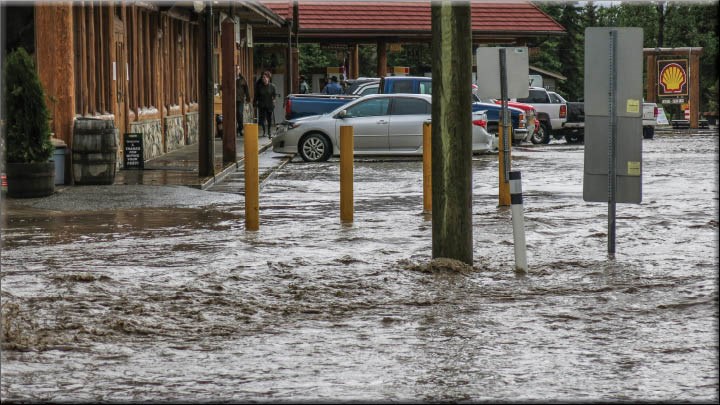Insured damage from severe weather events totalled over $3.1 billion in 2023, the fourth-worst year on record, according to the Insurance Bureau of Canada. Last year was also the second year in a row damages from severe weather have reached more than $3 billion.
Though 2023 will be remembered for the catastrophic, coast-to-coast wildfires, many communities were also rocked by torrential rains and hailstorms. Flooding in central Alberta in June caused $40 million in damage, and losses from Canada Day storms in Alberta and Saskatchewan totalled $100 million.
Because of increasing losses and the expectation severe weather events will increase in strength and frequency because of climate change, Canada is being viewed as a riskier place to insure. Already 1.5 million high-risk Canadian households can't get affordable flood insurance, according to the IBC.
"The federal government committed to a national flood insurance program in last year's federal budget. However, progress has stalled, leaving too many Canadians vulnerable to the effects of our changing climate," Craig Stewart, IBC's vice-president of climate change and federal issues, said in a news release.
"Canadians now need the federal government to move forward with this program and announce details in the 2024 federal budget. The homes and financial health of over 1.5 million Canadians are at high and growing risk."
Flooding is Canada's greatest climate change risk, according to a 2022 report from a Public Safety Canada task force. The Government of Canada's commitment to create the first national flood insurance program includes considerations for damages from storm surge, like those experienced in Atlantic Canada during hurricanes, river bed flooding, and urban overland flooding.
"Once launched, this program would provide Canadians living in high-risk areas with affordable financial protection and peace of mind when a flood strikes. Details of the program must be shared with our industry and the provinces this winter if it's to be operational before the next federal election," Stewart said.
The $3.1 billion cost identified by the Insurance Bureau gives some indication of the rising cost of climate change for insurers, taxpayers, and governments. A report from GHD on the economic impacts of droughts, floods, and storms projects that Canada's GDP could lose $108 billion between 2022 and 2050, or about 0.2 per cent of GDP per year. Flooding alone is expected to cost the Canadian economy $30 billion by 2050.
The Government of Alberta is forecasting an expense of $1.2 billion this fiscal year related to the provinces enduring droughts and unprecedented wildfires. The cost of fighting fires is expected to be $750 million, with another $55 million earmarked for evacuation and disaster response.
In December, the province announced $68 million in disaster recovery funding for communities hit by summer flooding. The funds are accessible to residents and businesses in Edson, Whitecourt, Yellowhead County and Woodlands County, and are intended to cover uninsured expenses, like property damage, repairs, and cleanup costs.



